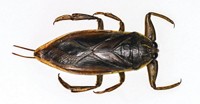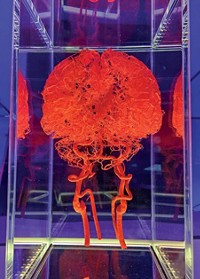Advertisement
Grab your lab coat. Let's get started
Welcome!
Welcome!
Create an account below to get 6 C&EN articles per month, receive newsletters and more - all free.
It seems this is your first time logging in online. Please enter the following information to continue.
As an ACS member you automatically get access to this site. All we need is few more details to create your reading experience.
Not you? Sign in with a different account.
Not you? Sign in with a different account.
ERROR 1
ERROR 1
ERROR 2
ERROR 2
ERROR 2
ERROR 2
ERROR 2
Password and Confirm password must match.
If you have an ACS member number, please enter it here so we can link this account to your membership. (optional)
ERROR 2
ACS values your privacy. By submitting your information, you are gaining access to C&EN and subscribing to our weekly newsletter. We use the information you provide to make your reading experience better, and we will never sell your data to third party members.
Education
Newscripts
Globe-Trotting Gnome, Scorpion Surprise
by Susan J. Ainsworth
April 16, 2012
| A version of this story appeared in
Volume 90, Issue 16
While ceramic and polymeric gnomes are resuming their rightful places in many people’s freshly tilled spring gardens, one particular gnome is busy traveling the globe. His journey is part of what might be the world’s largest mass-participation gravity experiment.






Kern & Sohn, a firm that produces, calibrates, and distributes precision weights and scales, is using an acrylic gnome named Kern to demonstrate the importance of calibrating scales accurately to offset the effect of local gravity worldwide. Without such calibration, objects appear lighter or heavier at different locations around the planet.
As part of the experiment, volunteers, who are mostly scientists, receive a flight case containing the one-and-only gnome, along with Kern & Sohn precision scales. The firm calibrated the scales at its laboratory in Balingen, Germany, so any change in Kern’s weight recorded at other locales will reflect a change in gravity. After weighing the gnome and taking photographic evidence, volunteers ship Kern to his next destination.
“Most people don’t realize Earth’s gravity actually varies slightly,” mostly because of “variations in the shape of the planet,” explains Tommy Fimpel, project coordinator for the experiment. “Believe it or not, Earth is actually slightly potato-shaped, so you’ll weigh up to 0.5% more or less, depending on where you go.”
When Kern the gnome visited the South Pole, he was significantly heavier than at all other sites, according to Marie McLane, a researcher at the U.S. Amundsen-Scott South Pole Station. “That’s partly because at the poles, the inertia produced by Earth’s rotation is far stronger.”
So far, the jet-setting gnome has traveled to places as far-flung as Lima, Peru; Mumbai; San Francisco; and Sydney, Australia. He has also stopped at Snolab in Ontario, the world’s deepest laboratory, located 2 km below Earth’s surface.
With many more destinations on his itinerary, Kern is set to become the world’s most traveled garden gnome. You can track his progress, volunteer to weigh him, and read his blog at gnomeexperiment.com.
If Kern the gnome should ever make a stop near Death Valley National Park, in California, he (and accompanying volunteers) may want to tread lightly in local gardens, especially rock gardens. Researchers from the University of Nevada, Las Vegas (UNLV), have discovered an intriguing new scorpion species, which they have named Wernerius inyoensis, after the Inyo Mountains where it was found. The study was published in the open-access journal ZooKeys (DOI: 10.3897/zookeys.177.2562).

Matthew R. Graham, a Ph.D. candidate in UNLV’s School of Life Sciences, discovered a single male scorpion, only 16 mm in length, that had physical characteristics unique enough to identify it as part of a new species. An identifying characteristic of this new species is the presence of a conspicuous spine at the base of its stinger, the function of which, if any, is so far unknown.
Accompanied by his father, who was volunteering during the nighttime survey, Graham made the discovery using ultraviolet light. Scorpions glow under UV light because of fluorescent compounds—including β-carboline and 7-hydroxy-4-methylcoumarin—found in their exoskeletons.
Graham and his research group suspect that the new species is subterrestrial, spending its life deep in rock crevices or in the interstitial spaces among piles of loose rock. Even in the seemingly well-studied national parks of North America, you never know what you might encounter. So on your next hike, stay alert—and watch your step.





Join the conversation
Contact the reporter
Submit a Letter to the Editor for publication
Engage with us on Twitter